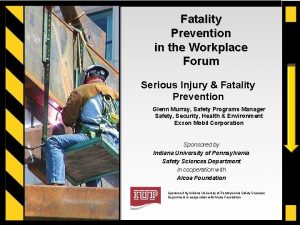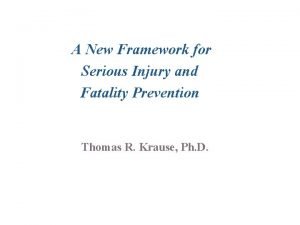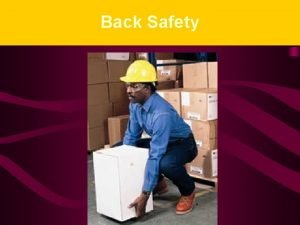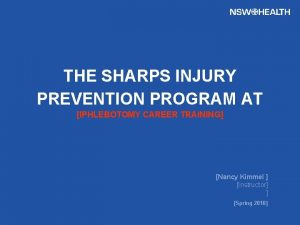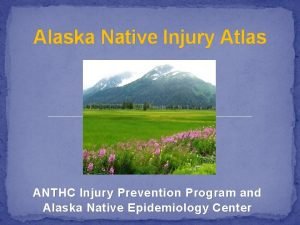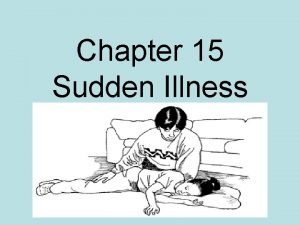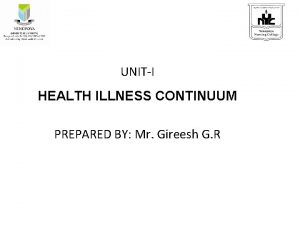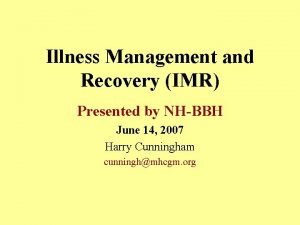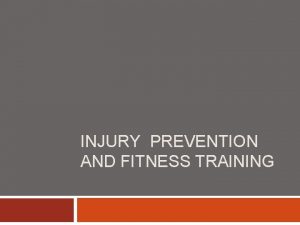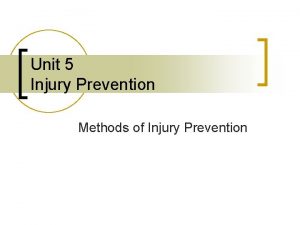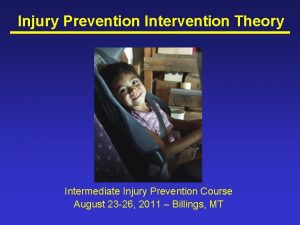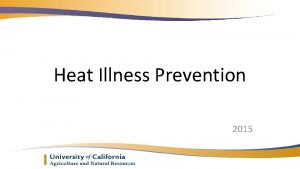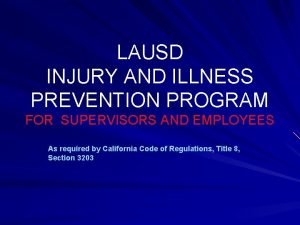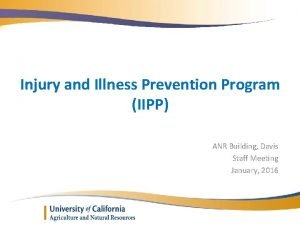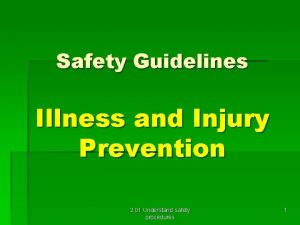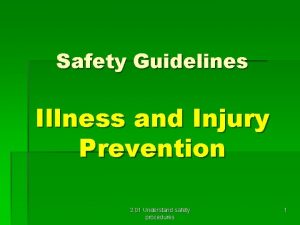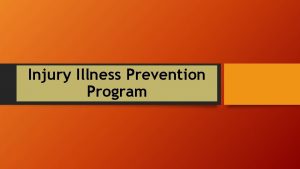Injury and Illness Prevention Programs Injury and Illness



















- Slides: 19

Injury and Illness Prevention Programs

Injury and Illness Prevention Programs: Why Do We Need Them? • Every day, more than 12 workers die on the job – over 4, 500 a year. • Every year, more than 4. 1 million workers suffer a serious job-related injury or illness. We need an enhanced focus on prevention to bring these numbers down.

Injury and Illness Prevention Programs: What Are They? • Flexible, commonsense, proven tool to find and fix hazards before injuries, illnesses, or deaths occur. • Six core elements: – – – Management leadership Worker participation Hazard identification and assessment Hazard prevention and control Education and training Program evaluation and improvement

Direct Costs of Injuries and Illnesses Direct costs of the most disabling workplace injuries in the U. S. averaged $47. 6 billion per year between 1998 and 2008

Indirect Costs of Injuries and Illnesses • Examples: – – – Wages not covered by workers compensation Administrative time Costs of training replacement employees Lost productivity Replacement costs of damaged material • Can be 1. 1 to 4. 5 times the direct costs

Societal Costs of Injuries and Illnesses • Workplace fatalities: $40 billion /year • Non-fatal injuries • Occupational illnesses – 60, 000 deaths/year – 850, 000 new illnesses/year

Injury and Illness Prevention Programs: Do They Work? • Proven benefits: – Transform workplace safety and health culture – Reduce injuries, illnesses, and deaths – Lower workers’ compensation and other costs – Improve morale and communication – Enhance image and reputation – Improve processes, products and services

Injury and Illness Prevention Programs: Do They Work?

Injury and Illness Prevention Programs: Do They Work? • Implementing injury and illness prevention programs could: – Reduce injuries by 15 to 35% – Save $9 billion to $23 billion per year in workers’ compensation costs – Reduce indirect costs

Anthony Forestry Products: Small Business Success Story

Injury and Illness Prevention Programs: Who Is Using Them? • 34 U. S. states require or encourage injury and illness prevention programs – 15 states have mandatory regulations – Other states have financial incentives, including workers comp premium reductions – 16 states have voluntary guidance, consultation, and training

OSHA’s VPP and SHARP Programs • VPP: Nearly 2, 400 establishments • SHARP: More than 1, 500 small businesses • Ohio 21(d) SHARP Program Performance Assessment – – Average number of claims: down 52% Average claim cost: down 80% Average lost time per claim: down 87% Claims per $million payroll down 88%

Injury and Illness Prevention Programs: Who Is Using Them? • Federal agencies – Department of Defense – Department of Energy

Department of Defense

Industry Consensus Standards • American National Standards Institute (ANSI) • American Industrial Hygiene Association (AIHA) • Occupational Health and Safety Assessment Series (OHSAS) Project Group

International Experience • Canada • Australia • European Union member countries

Injury and Illness Prevention Programs: How Do They Work? • One size does NOT fit all! • Flexibility in implementing the six core elements – They can be adapted for an organization’s size, industry sector, complexity of operations, workforce characteristics, etc.

In Conclusion • The human toll from workplace deaths, injuries and illness is incalculable, and the economic toll is enormous. • Injury and illness prevention programs offer a simple, sound, proven approach, adaptable to your business. • These programs will improve compliance, reduce injuries and illnesses, reduce costs, and enhance business operations.

Questions?
 Primary prevention secondary prevention tertiary prevention
Primary prevention secondary prevention tertiary prevention Define health
Define health Injuries first aid
Injuries first aid Serious injury and fatality prevention
Serious injury and fatality prevention Serious injury and fatality prevention
Serious injury and fatality prevention Examples of intentional injury
Examples of intentional injury Needle stick injury prevention images
Needle stick injury prevention images Back injury prevention quiz answers
Back injury prevention quiz answers Hand injury prevention
Hand injury prevention Needle stick injury
Needle stick injury Atlas injury prevention
Atlas injury prevention Bully prevention programs
Bully prevention programs Overview of software engineering
Overview of software engineering Chapter 20 mental health and mental illness
Chapter 20 mental health and mental illness Sudden illness definition
Sudden illness definition Conclusion of mental hygiene
Conclusion of mental hygiene Illness and wellness continuum
Illness and wellness continuum Health illness continuum
Health illness continuum Nhbbh
Nhbbh History of present illness example
History of present illness example



